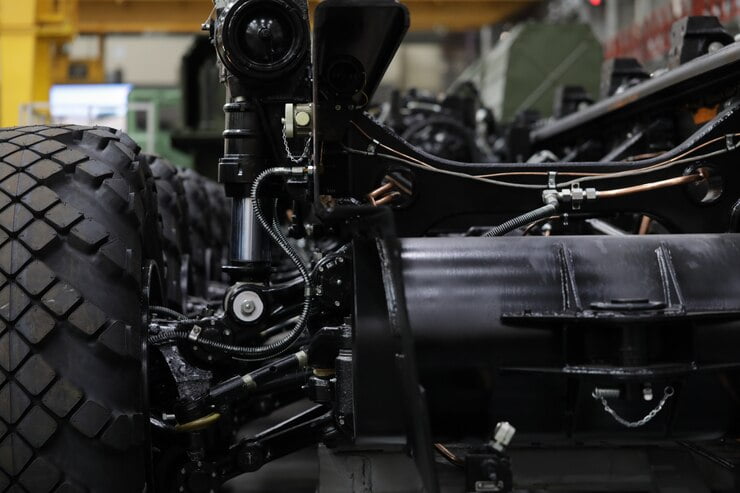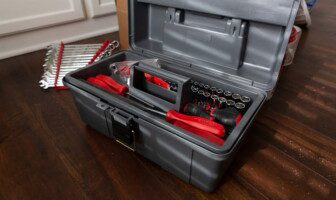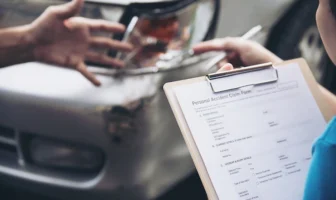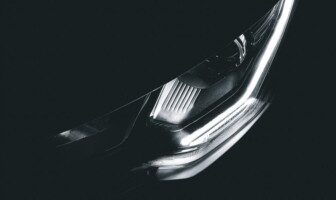
Anytime you raise the power output of a standard engine and increase the speed, you need to balance the driveshaft. Most factory driveshafts are balanced between 3,000 and 3,500 RPM. Spinning it beyond that range might have a parasitic impact.
The car driveshaft uses torque generated by the engine to move the car’s wheels. This means that if there is an issue with it, you might notice difficulties with the vehicle’s handling. It could be challenging to tell, so here are some five signs of a broken driveshaft.
What Is A Driveshaft On A Car?
A drive shaft is a part of the car which looks like a rod. The function of the driveshaft is very simple. This rod-like component transmits the torque from your vehicle’s engine to the wheels.
That is a shaft that can drive your vehicle. The driveshaft transmits the torque and varies the angles between the driveline of each car component. Sprint car driveshaft is transmitting torque value which is excess of 700 lb-ft.
Related Guide: Decorating Your Car With LED Lights
What Are The Symptoms Of Car Driveshaft Problems?
Here are some of the signs which are the symptoms that your car driveshaft is not functioning properly.
1. Vibrations
When the car driveshaft starts to fail, you may feel some vibration. As time goes by, this vibration gets worse. Deteriorating U-joints or bushings can cause vibrations.
Other times, it might be from an unbalanced or unsecured driveshaft. Allowing the powertrain to continue vibrating will damage other vital components of the vehicle.
2. Clunking Noises
If you hear clunking sounds, it might be a car driveshaft issue. You may hear this sound more prominently after turning directions.
In certain circumstances, the clunking might be worn out from the U-joint. Whatever the reason, you should always get it checked.
3. Squeaking Sounds
When the bushings and bearings get damaged, the car driveshaft has difficulties turning properly. This generates a multitude of sounds from your car.
For example, creaking during low-speed movement might suggest that the U-joint doesn’t have adequate lubrication. This is a simple remedy that just takes some grease. However, you can also detect pounding or clicking sounds, which means the CV joint has deteriorated.
4. Shuddering During Acceleration
While we spoke about minor vibration, the shaking problem is more obvious. As you accelerate from a stopped position or gain speed, you may notice an increase in shuddering. This is often due to some drivetrain problems.
Sometimes this is caused by a loose U-joint or a worn-out central bearing. It might also be accompanied by some of the car driveshaft noises we already mentioned.
5. Difficulty Turning
While the driveshaft car is responsible for translating torque into movement, it also impacts your car’s turning movement. When the driveshaft gets broken, the wheels cannot turn correctly. This will reduce your control over the vehicle, which may lead to a dangerous accident.
What To Do After Finding The Problems In Car Driveshaft?
Many times the failed components of a car driveshaft can also be the reason for the sounds of the vibrations. The U joint bearing is sometimes damaged, and at that time, you will need immediate change or replacements. How to find the problem?
The solutions are easy. If you see the sudden vibration feelings underneath your car. You must check your current situation with the driveshaft car. Hence there are sudden problems there. After starting your car engine, the first symptoms you will see will be vibration sounds underneath your car.
Related Guide: Car Maintenance Tips: Keep Your Investment Safe
Functions Of The Driveshaft
The car driveshaft turns the torque from our car engine into the movement that pushes the wheels. It’s a rod-like element that runs your automobile. It is responsible for distributing the torque at various angles.
The shaft is flexible enough so the axles can perform a lateral movement during accelerating and braking. Most car driveshaft assembly lines contain:
- Yokes
- Slip splines
- Universal joints
- Propeller shaft
- Bearings
A typical car driveshaft problem can be found in the rear four-wheel-driving vehicles. However, this problem in the front-wheel-driving car is not also uncommon. There is always a transaxle instead.
Learn More About Car Driveshaft Problems
A broken Drive Shaft of the car can lead to strange noises and difficulty turning. If you ignore the problem, it can lead to a car breakdown in the middle of nowhere. That can be a nightmare, but fortunately, there are ways to prevent it.
Once you notice the signs listed above, send your car to an auto mechanic. They can diagnose the problem and perform a car driveshaft repair. Try not to do this yourself, but continue reading our blog posts if you are curious about the driveshaft.
Read Also:
































